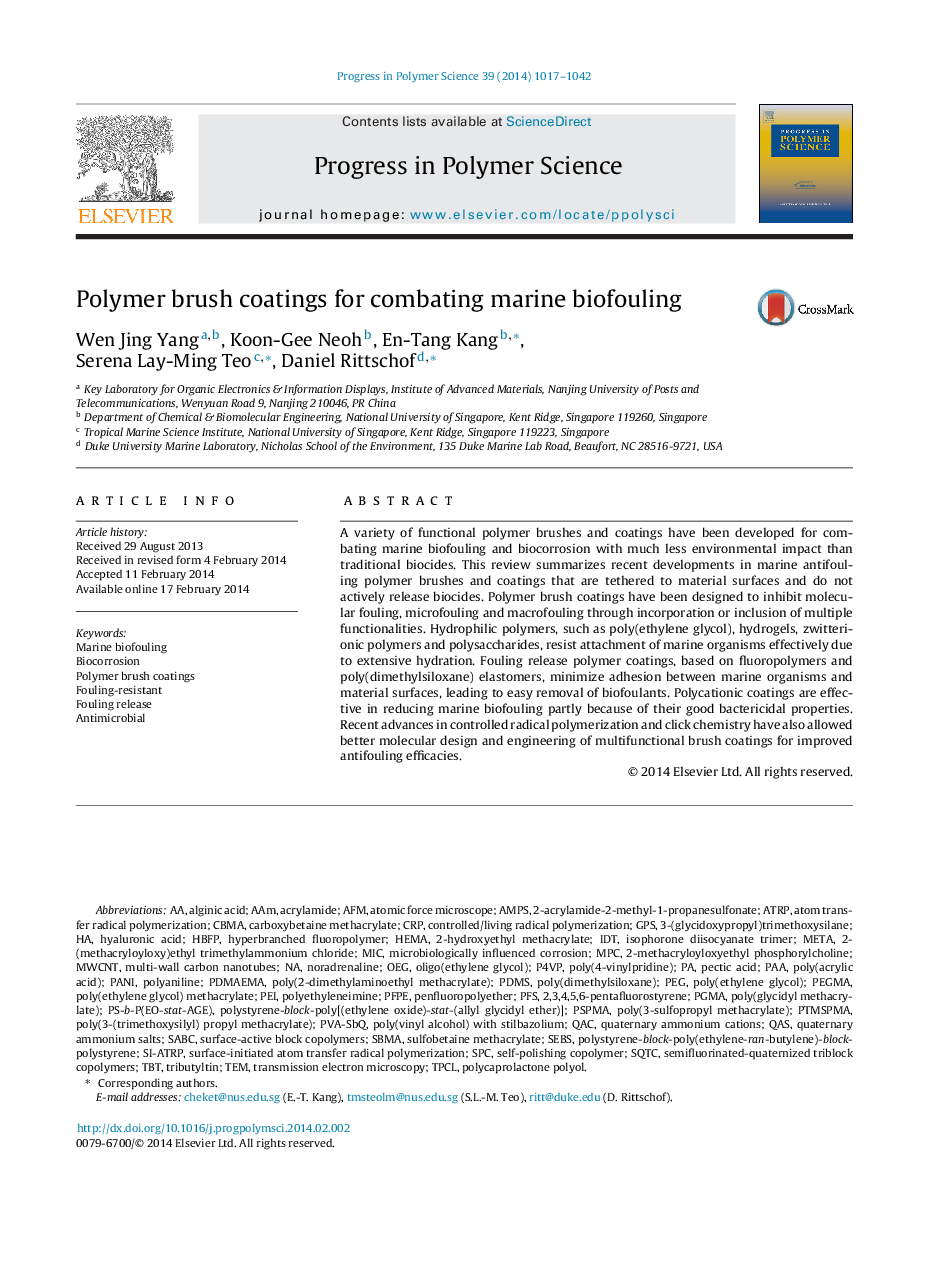| Article ID | Journal | Published Year | Pages | File Type |
|---|---|---|---|---|
| 5208233 | Progress in Polymer Science | 2014 | 26 Pages |
A variety of functional polymer brushes and coatings have been developed for combating marine biofouling and biocorrosion with much less environmental impact than traditional biocides. This review summarizes recent developments in marine antifouling polymer brushes and coatings that are tethered to material surfaces and do not actively release biocides. Polymer brush coatings have been designed to inhibit molecular fouling, microfouling and macrofouling through incorporation or inclusion of multiple functionalities. Hydrophilic polymers, such as poly(ethylene glycol), hydrogels, zwitterionic polymers and polysaccharides, resist attachment of marine organisms effectively due to extensive hydration. Fouling release polymer coatings, based on fluoropolymers and poly(dimethylsiloxane) elastomers, minimize adhesion between marine organisms and material surfaces, leading to easy removal of biofoulants. Polycationic coatings are effective in reducing marine biofouling partly because of their good bactericidal properties. Recent advances in controlled radical polymerization and click chemistry have also allowed better molecular design and engineering of multifunctional brush coatings for improved antifouling efficacies.
